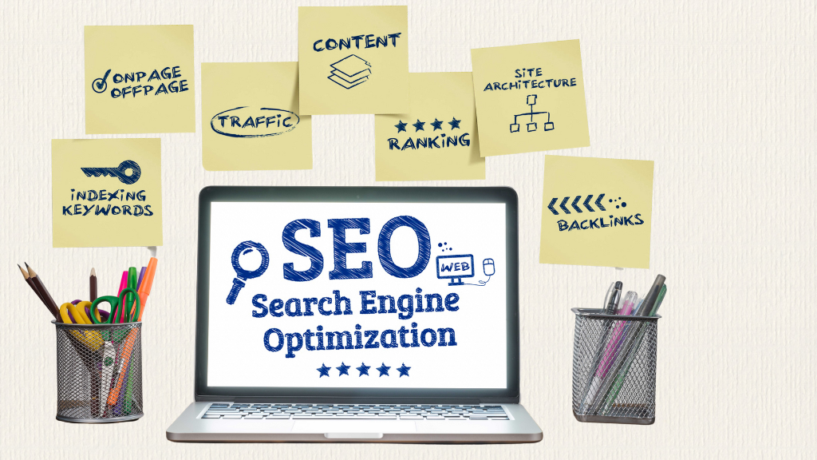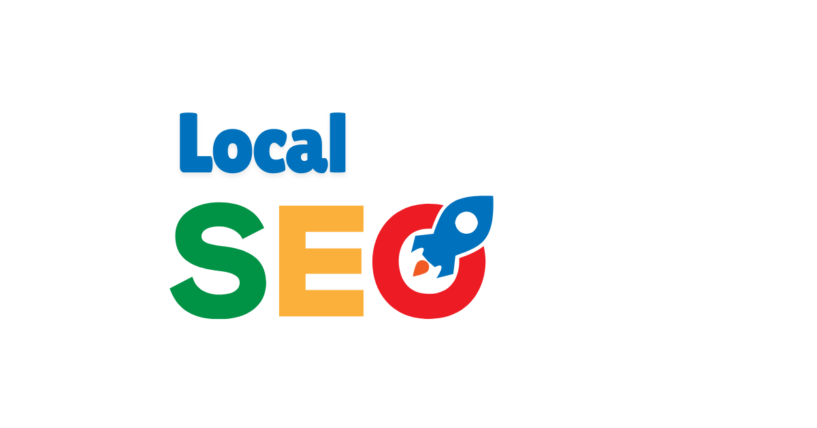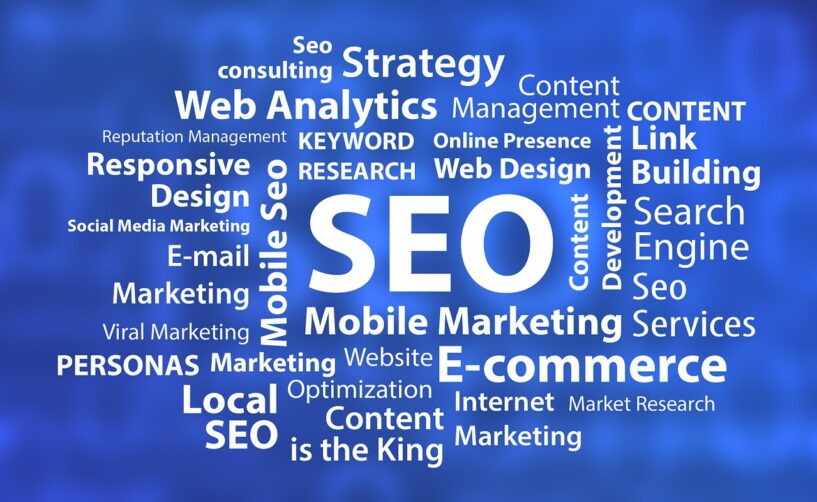Search Engine Optimization (SEO) is the backbone of building an online presence. You might be a part of the millions of Google Search results, but who goes to the third, fourth, fifth, or even second page of search results? This is where SEO services come to help!
Reports show over 3.5 billion searches on Google daily, and SEO drives 1,000%+ more traffic than organic social media.
So, SEO can increase the visibility of your brand massively without paid ads.
This article tells you everything from what SEO services include to the numerous benefits they offer.

What is SEO?
Search Engine Optimization or SEO refers to ranking your content on top of search results using the right strategies. It includes incorporating keywords in the right places, building authority, and focusing on your website’s functioning, such as loading speed.
Optimizing your content for search results increases its visibility and boosts website visits and conversions.
The best part is that search engine optimization brings organic results, eliminating the need for PPC. However, you will need help from an SEO expert to push your content to the top results.
Let’s tell you how SEO services improve your ranking and maximize your reach.
What do SEO Services Include?
SEO includes two basic types of services that collectively move your content to the top. They are:
- On-page SEO
- Off-page SEO
On-Page SEO
On-page optimization refers to optimizing everything you can see directly on the website. It includes everything from blog posts to meta descriptions, URLs, and more.
Here’s what Search Optimization Services work on to improve your on-page SEO:
Keyword Search: On-page SEO relies entirely on keyword research, as everything on the website is optimized according to these keywords. SEO experts find the most suitable keywords for different pages on your site to maximize its visibility.
Meta Tags: Meta tags refer to meta titles and descriptions that users see when they see your content in search results. The meta title is simply the search result’s title, while the meta description appears as a small description or snippet below the title. SEO requires incorporating the keywords naturally in the meta tags to bring it to Google’s top results.
Blog Posts: Furthermore, blog posts are a critical element of SEO; now most websites have a ‘blog’ segment that helps incredibly with improving ranking. Adding the right keywords to the blog posts increases your chances of appearing higher in search results. But there’s more to blogs than just searching keywords and randomly stuffing them. That’s where SEO content creation comes into play.
URL: While people do not usually think much of the URL, it plays a critical role in optimization. SEO services use suitable keywords in URLs to make them SEO-friendly and increase relevance.
Internal Linking: Internal linking refers to linking content on one web page to another. It allows the user to navigate further pages on your website. It also enables the search engine to understand your website’s structure better.
Image SEO: Images contribute not only to visitors’ visual experience, but also help optimization. Image optimization includes using keywords in image file names, alt text, and captions. It increased relevance, improving your website’s SEO.
Off-Page SEO
The second part of search engine optimization requires modifying other parts of your website that the user does not interact with directly. They are as follows:
Backlinks: Backlinks refer to having your page links on other websites. Usually, these websites link your pages in their content, driving the audience to your site and building authority. The best practice is to focus on backlinks from different high-authority websites; multiple links from the same websites repetitively do not contribute much.
Content Marketing: Content marketing is another integral part of SEO services that allows you to distribute your content on various platforms. It includes guest posting, social media, influencer marketing, PR, podcasts, etc.
Reviews: While good reviews automatically improve your reputation, bad reviews are also an opportunity to optimize your business. SEO expert techniques recommend replying to all the reviews (good or bad) to represent good customer service.
Local SEO is another part of off-page SEO services we will discuss in detail.
What are Local SEO Services?
Recently, internet users are searching more using location-related terms like ‘near me’ and ‘where to buy.’ You might be surprised to know many people also search while shopping in a store.
Studies show 76% of people who search for something on their smartphone visit a nearby shop within a day.
So, if you are targeting people around you, knowing what are local SEO services has become incredibly important.
Local SEO refers to optimizing your website for local search results on Google. It is primarily helpful for businesses with a physical location. It helps you appear in the top results when a user searches for a product or service around them.
Local SEO focuses on more than incorporating keywords in your content. Here’s how to use it to improve your business ranking:
- You must create separate landing pages for different locations to offer a more customized experience.
- Meta tags and business details must be location-specific.
- Furthermore, reviews of particular business locations regarding local SEO can also be helpful.
- Link building with other local businesses increases your visibility.
Mobile SEO
When talking about what SEO services include, mobile optimization is an integral element.
Latest statistics show that 60.4% of total web visits come from mobiles, increasing the need for mobile optimization.
You can make your website more mobile-friendly using the following strategies:
- Create a mobile-responsive website design, allowing it to adapt to different screen sizes and resolutions
- Optimize images and videos suitable for navigating on smaller screens
- Ensure high loading speed on mobile devices to avoid elevated bounce rates
- Minimize the number of clicks required to perform an action or obtain information on your website
- Create meta tags, easily visible on mobile screens
Benefits of SEO Services
Have you noticed how some websites appear in a particular niche’s search results on top?
How do you think that happens? You are right; it’s because of SEO!
Search engine optimization helps create brand awareness, familiarize potential leads with your brand, and earn more revenue.
Some of the most prominent benefits of SEO services include:
Increases Credibility
As mentioned above, websites that show on top of search results eventually earn a reputation as trustworthy and credible sources. High-quality content combined with the right SEO strategies increases your credibility among readers. SEO experts know the art of bringing your website to the top without using black hat optimization strategies.
Outdo, Your Competitors
Almost everyone has started investing in SEO; if you don’t, you will be left out. Surveys show that the results on the first page of a Google search receive over 90% of traffic. And you surely don’t want to lag!
Using the right SEO strategies helps you outdo your competitors and stay on top of search results.
Better Local Ranking
Local SEO is contributing significantly to ranking for local businesses. Most local searches result in in-store conversions. Create a Google My Business account, get reviews, and optimize your listing for voice search.
No Continuous Costs
Running ads costs you money every second, but it is not the same with SEO.
Search engine optimization is typically a one-time investment that helps you boost your content and push it to the top. While you might need to make changes and update content periodically, the costs are not continuous like PPC.
Maximizes PPC Efforts
If you want to run PPC regardless, SEO ensures you get the best results. While PPC shows your results on top, adequate SEO does the same. Who doesn’t like ranking twice in top results?
It shows you can attain the top position organically even when using paid ads to increase website views and conversions. It is more suitable for keywords with a low per-click cost.
Quantifiable Results
Search engine optimization helps you track website traffic and conversion changes by analyzing your website’s performance. SEO services provide you with all the metrics regarding optimization and improve constantly to push you to the top ranking.
Why Partner with a Technical SEO Agency?
Now that you know what is SEO and what are local SEO services, you must realize how critical optimization is. However, if you wonder how a technical SEO agency can help, here are all the benefits:
- They improve the overall functionality of the website by SEO as it indirectly increases retention and decreases the bounce rate
- They push your content to the top and increase organic traffic to your website through relevant keywords
- SEO services work on overall website optimization by studying analytical reports leading to quality audience
- They help you rank high on SERPs, bringing relevant visitors and boosting conversions.
Ready to Maximize Your Visibility?
This article mentioned everything from what SEO services include to the benefits of SEO, detailing how you can maximize your visibility.
SEO experts at Kubico understand the intricacies of search engine optimization and work diligently to push your website to the top. If you are looking forward to increasing organic traffic to your website and eventually boosting conversions, we’ll be happy to help.










